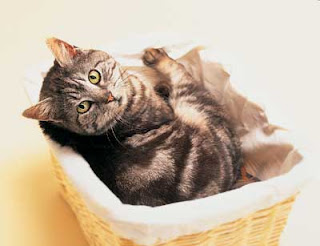Cats And Feline Diabetes
 Cats are one of the most popular pets in North America. They are loving pets, capable of providing you years of companionship. Like other pets, cats can sometimes get sick. There are several different types of ailments that cats can get, one of which is feline diabetes. Feline diabetes is a serious disease, although it can be treated by a veterinarian.
Cats are one of the most popular pets in North America. They are loving pets, capable of providing you years of companionship. Like other pets, cats can sometimes get sick. There are several different types of ailments that cats can get, one of which is feline diabetes. Feline diabetes is a serious disease, although it can be treated by a veterinarian.
Diabetes is more common with humans than with cats or other animals. The cause of diabetes is actually quite simple. Sugar, or glucose, is found in the blood. The level of blood sugar in the body or the animal is kept under control by hormone insulin, which the pancreas produces. When the pancreas doesn’t produce enough insulin, diabetes is to blame.
Curing Bad Cat Breath
You may be able to clean the tartar off your cat’s teeth at home. There are several toothpastes available for pets, available in several different flavors. You’ll need to get a mechanical toothbrush, as the motion is very important for removing tartar buildup. Toothpastes that contain enzymes will dissolve tartar, helping to cure bad breath. If you start early with brushing your cat’s teeth, you can virtually eliminate any type of tartar buildup that will ultimately lead to bad breath.
pet dander allergies
 Pet dander allergies are a problem for any pet owner with an allergy to cats. Cat owners with a cat dander allergy may not realize that whether they own a pet cat or dog, the problem and solution are about the same.
Pet dander allergies are a problem for any pet owner with an allergy to cats. Cat owners with a cat dander allergy may not realize that whether they own a pet cat or dog, the problem and solution are about the same.
Pet dander, cat dander, dog dander, even human dander are very small flakes of skin (dandruff) that shed continuously into the environment around us. Household dust is made up mostly of human and pet dandruff.
In humans, cat dander allergies are normally generated by cat dander as well as their saliva and urine. The same is true of dogs dander. So dander or dandruff is not the sole cause. Animal fur itself is not an allergen, but common allergens are often found on fur, especially saliva and urine.
Dander Galore
Between cats dander and dogs dander it is dog dander that is a more frequently a problem with humans. There are two logical reasons for this. First, dogs are often larger so as stated above, they usually have more skin that can dry and flake off.
Cat allergy solutions
 Cat allergy solutions are around the corner if you own a cat but have a cat allergy. Most people do not have strong allergenic reactions. The symptoms are usually minor and very manageable. If your reactions are not major, you can reduce the risk of having or decreasing the affects of an allergenic reaction by using the suggestions in this article.
Cat allergy solutions are around the corner if you own a cat but have a cat allergy. Most people do not have strong allergenic reactions. The symptoms are usually minor and very manageable. If your reactions are not major, you can reduce the risk of having or decreasing the affects of an allergenic reaction by using the suggestions in this article.
Cat allergies are airborne and therefore must be breathed in by you for you to be affected. Although airborne allergens are generally harder to control, nevertheless they are certainly controllable. There is an appropriate old saying, “where there’s a will, there’s a way.”
1. Wash or clean your cat regularly. Of course you already know that many cats dislike baths. Older cats not used to baths will likely have a frantic reaction to getting wet. However, if cats are bathed from a young age, they tend to tolerate the experience better.
